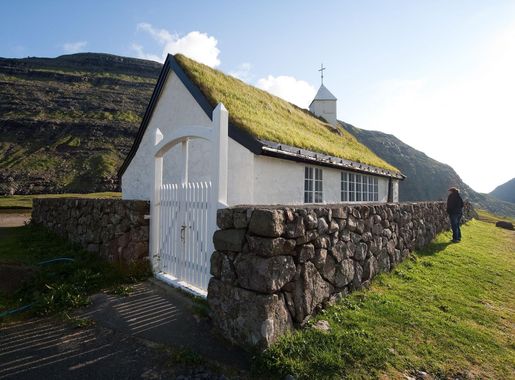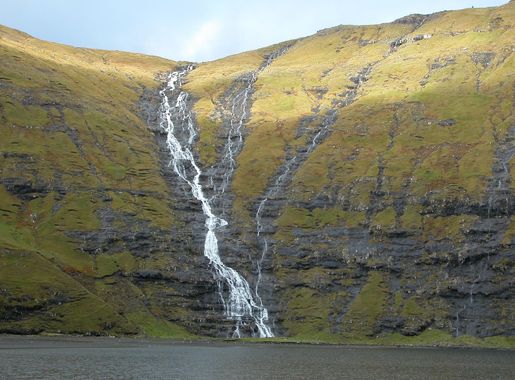
Saksun: The Hidden Gem of the Faroe Islands
Discover Saksun in the Faroe Islands - a serene village with grass-roofed houses, stunning fjords, and rich history, perfect for nature lovers and photographers.
Nestled in a picturesque valley, Saksun is a quaint village that offers a serene escape from the hustle and bustle of modern life. The village is surrounded by steep mountains and a large tidal lagoon, creating a dramatic and breathtaking landscape. The traditional grass-roofed houses add to the charm, making Saksun a perfect spot for photographers and nature lovers alike. One of the main attractions in Saksun is the old church, built in 1858, which stands as a testament to the village's rich history. Nearby, you can find the Dúvugarðar farm, a well-preserved example of a traditional Faroese farmstead. The farm is now a museum, providing insight into the lives of the island's early inhabitants. For those who enjoy hiking, there are several trails that offer stunning views of the surrounding mountains and fjords. The hike to the tidal lagoon is particularly popular, providing a unique opportunity to see the dramatic change in landscape as the tide comes and goes. Whether you are an avid hiker or simply looking to relax in a peaceful setting, Saksun has something to offer everyone.
Local tips in Saksun
- Visit during low tide to walk along the lagoon's shore and experience the dramatic landscape changes.
- Bring waterproof clothing as the weather can be unpredictable, even in summer.
- Respect local customs and private properties when exploring the area.
- Consider hiring a local guide for a more in-depth understanding of the village's history and culture.
- Pack a picnic and enjoy it at one of the many scenic spots around the village.
Saksun: The Hidden Gem of the Faroe Islands
Nestled in a picturesque valley, Saksun is a quaint village that offers a serene escape from the hustle and bustle of modern life. The village is surrounded by steep mountains and a large tidal lagoon, creating a dramatic and breathtaking landscape. The traditional grass-roofed houses add to the charm, making Saksun a perfect spot for photographers and nature lovers alike. One of the main attractions in Saksun is the old church, built in 1858, which stands as a testament to the village's rich history. Nearby, you can find the Dúvugarðar farm, a well-preserved example of a traditional Faroese farmstead. The farm is now a museum, providing insight into the lives of the island's early inhabitants. For those who enjoy hiking, there are several trails that offer stunning views of the surrounding mountains and fjords. The hike to the tidal lagoon is particularly popular, providing a unique opportunity to see the dramatic change in landscape as the tide comes and goes. Whether you are an avid hiker or simply looking to relax in a peaceful setting, Saksun has something to offer everyone.
When is the best time to go to Saksun?
Iconic landmarks you can’t miss
Dúvugarðar Heritage Farm
Discover Dúvugarðars Heritage Farm: A Unique Fusion of Faroese Culture, Nature, and Culinary Delights in the Heart of Saksun.
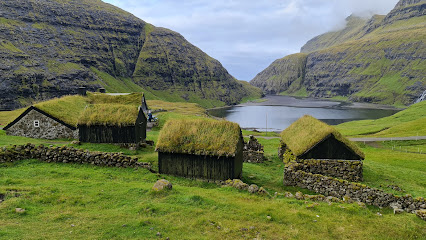
Dúvugarðar Museum & Café
Experience the rich history and local flavors at Dúvugarð Museum & Café, a cultural gem in the heart of the Faroe Islands.

Saksun Church
Discover the tranquil beauty of Saksun Church, an iconic landmark in the Faroe Islands, surrounded by stunning landscapes and rich cultural heritage.
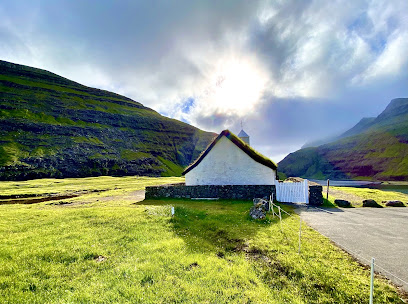
Út á Lónna - Black Beach Saksun
Discover the breathtaking beauty of Út á Lónna - Black Beach Saksun, a hidden gem in the Faroe Islands perfect for hiking enthusiasts and nature lovers.
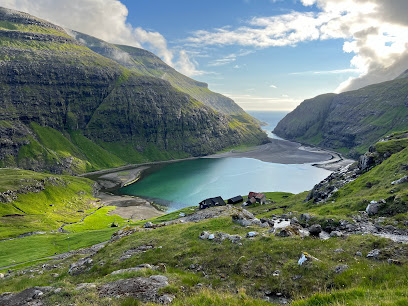
Saksun, vandfald og historie
Explore the breathtaking beauty and rich history of Saksun, a captivating village in the Faroe Islands, surrounded by stunning landscapes and waterfalls.
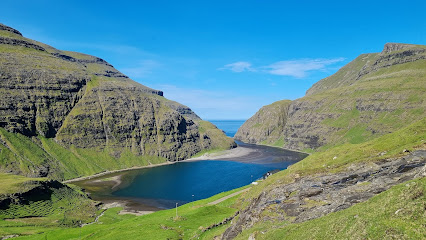
Unmissable attractions to see
Vestmanna Tourist Centre
Explore the stunning Faroe Islands at the Vestmanna Tourist Centre, where adventure, culture, and culinary delights await every visitor.
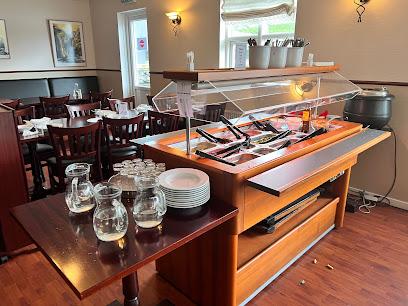
Út á Lónna - Black Beach Saksun
Experience the breathtaking beauty of Út á Lónna - Black Beach, a stunning hiking area in the Faroe Islands with dramatic cliffs and serene landscapes.
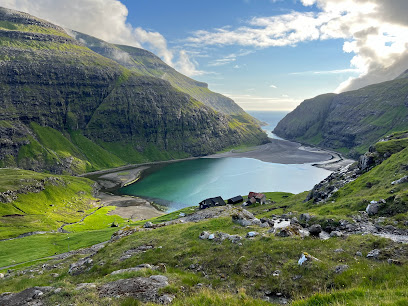
Vestmanna
Explore the breathtaking cliffs and rich culture of Vestmanna, a hidden gem in the Faroe Islands, perfect for nature lovers and adventure seekers.
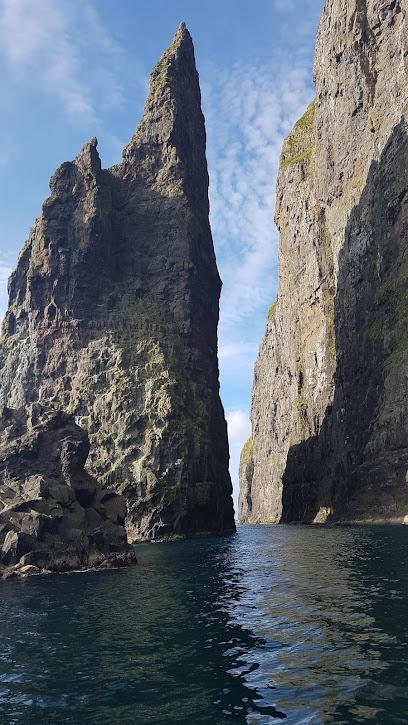
Essential places to dine
Katrina Christiansen
Experience authentic Scandinavian cuisine at Katrina Christiansen in Tórshavn - where local flavors meet Faroese hospitality.
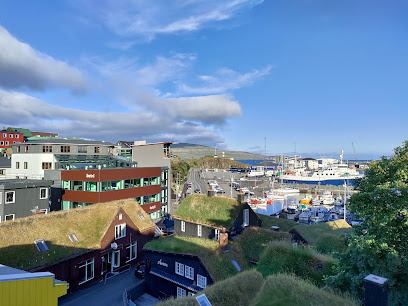
Angus Steakhouse
Indulge in top-quality steaks and local seafood at Angus Steakhouse in Tórshavn, where every meal is a celebration of flavor and tradition.
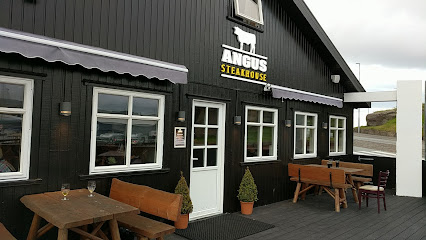
Áarstova
Experience authentic Faroese cuisine at Áarstova in Tórshavn – where tradition meets contemporary dining amidst breathtaking views.
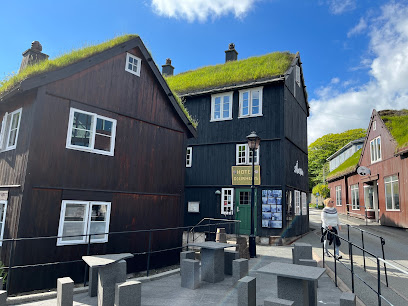
Barbara Fish House
Experience exquisite seafood dining at Barbara Fish House in Tórshavn - where fresh catches meet traditional Faroese flavors.

Koks Restaurant
Discover Koks Restaurant: A gastronomic journey through traditional Faroese cuisine set against breathtaking landscapes.
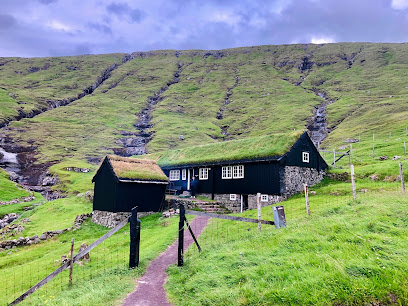
Toscana
Discover Toscana in Tórshavn - where authentic Italian cuisine meets fresh local seafood and premium steaks.
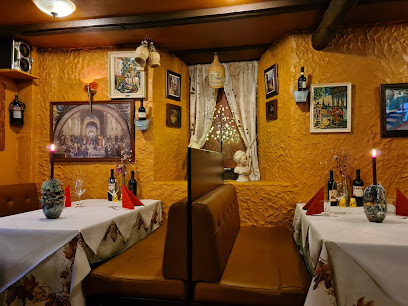
Rose's Restaurant & Catering
Discover authentic Faroese cuisine at Rose's Restaurant & Catering, where local ingredients meet stunning island views.

Café Zorva
Experience local flavors at Café Zorva in Sørvágur, where delicious dishes meet breathtaking views in the heart of the Faroe Islands.
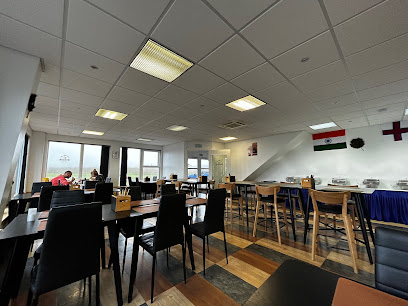
Fisk og Kips
Discover authentic Faroese flavors at Fisk og Kips – where fresh fish meets crispy chips in Tórshavn's cozy ambiance.
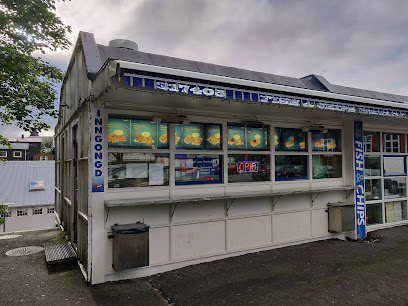
Kafe Umami
Discover the flavors of Tórshavn at Kafe Umami – where local ingredients meet culinary creativity in a cozy setting.
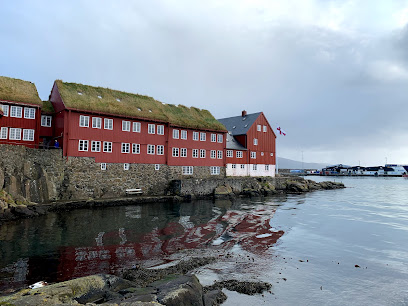
Suppugarðurin
Discover authentic Japanese ramen at Suppugarðurin in Tórshavn - where tradition meets local flavor in every delicious bowl.
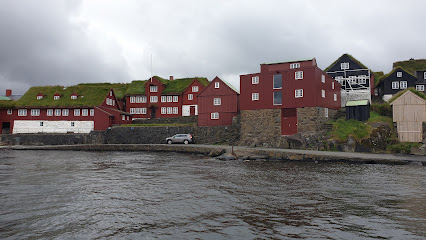
Seven
Savor authentic Chinese cuisine at Seven Restaurant in Tórshavn - where every dish tells a story.

Smiðjan
Experience authentic Faroese flavors at Smiðjan, where tradition meets culinary excellence in Miðvágur.
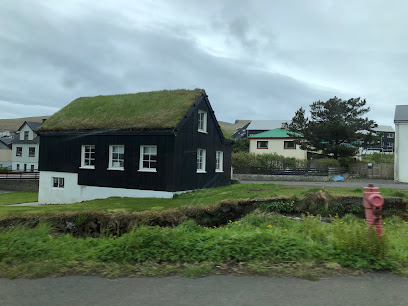
Resturant Cafe Pollastova
Experience authentic Faroese cuisine at Café Pollastova in Sørvágur – where breathtaking views meet local flavors.
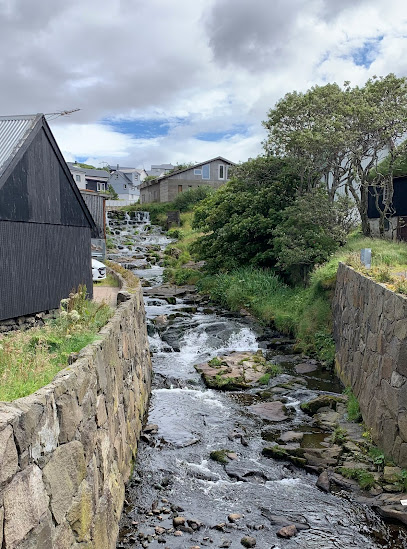
ROKS
Experience authentic Faroese cuisine at ROKS in Tórshavn - where local ingredients meet innovative cooking.
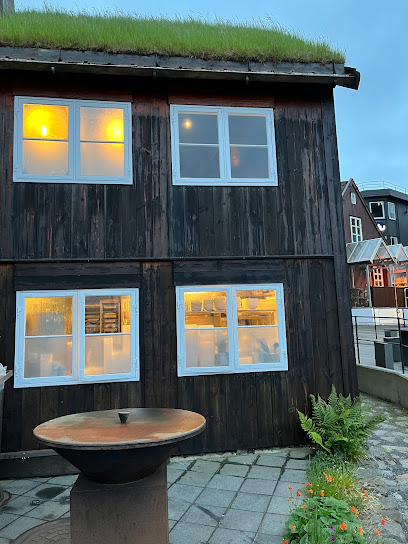
Markets, malls and hidden boutiques
Dúvugarðar Heritage Farm
Explore the rich culture and history of the Faroe Islands at Dúvugarðar Heritage Farm, with traditional architecture and local delicacies to discover.
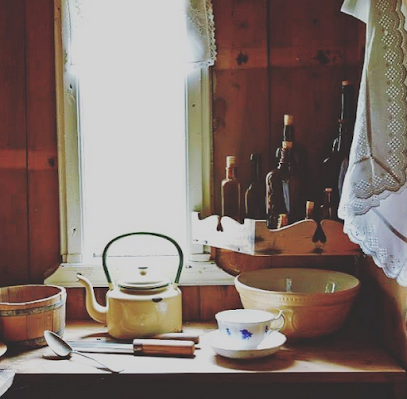
H. N. Jacobsens Bókahandil
Explore a treasure trove of books, souvenirs, and toys at H. N. Jacobsens Bókahandil in Tórshavn, the ultimate stop for unique Faroese gifts.
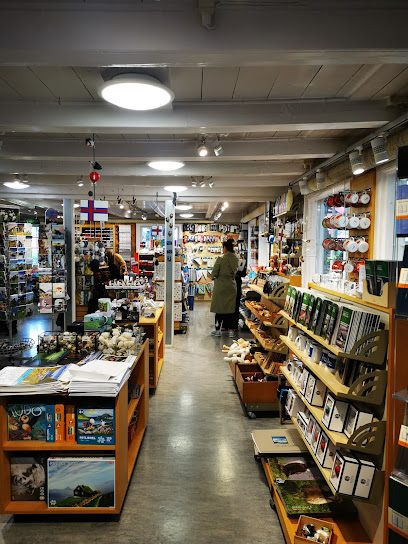
Bónus
Explore the vibrant selection at Bónus, the essential grocery store in Sandavágur, Faroe Islands, open daily until 10 PM.
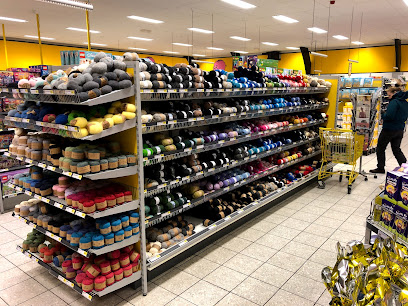
Bónus Norðskála
Discover Bónus Norðskála, the go-to grocery store in the Faroe Islands for affordable local and international products.
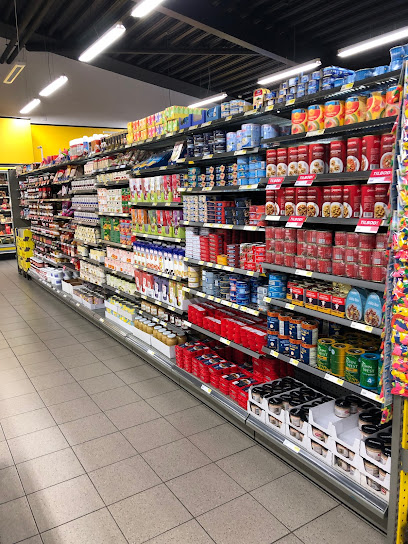
Á við Norðskála
Explore the local flavors and essentials at Á við Norðskála, a charming grocery store in Oyrarbakki, Faroe Islands.
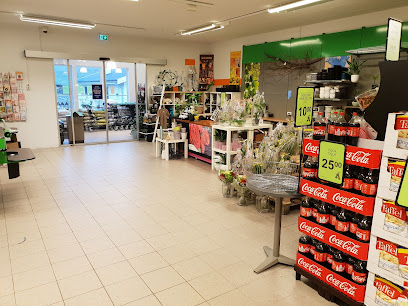
Guðrun & Guðrun
Discover unique Faroese fashion at Guðrun & Guðrun, a sustainable clothing store in Tórshavn that celebrates local craftsmanship.
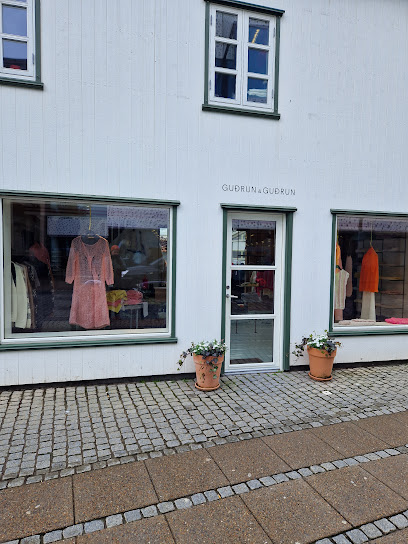
SJÓGÆTI
Experience the freshest seafood at SJÓGÆTI, a top-rated fish store in Norðskáli, Faroe Islands, offering local delicacies and friendly service.
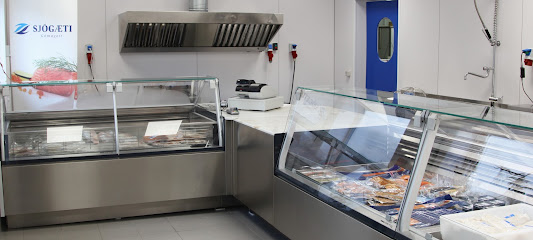
Á Sandoyggin
Discover the heart of Skopun at Á Sandoyggin, your local grocery store offering fresh produce and unique local products.
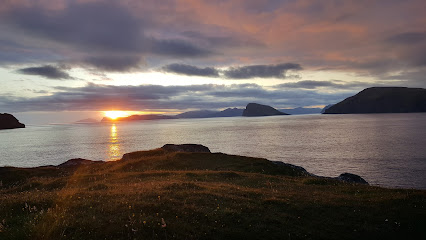
Rúsdrekkasøla Landsins - Norðskáli
Explore Rúsdrekkasøla Landsins - Norðskáli, the top state liquor store in the Faroe Islands, for a unique selection of local and international drinks.
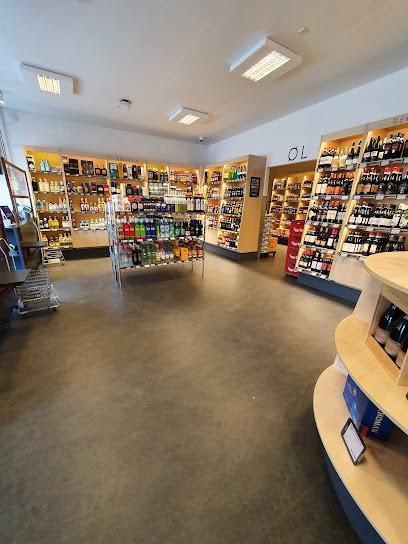
Ullvøruhúsið
Discover the essence of Faroese craftsmanship at Ullvøruhúsið in Tórshavn, where quality wool products reflect the beauty of the Faroe Islands.
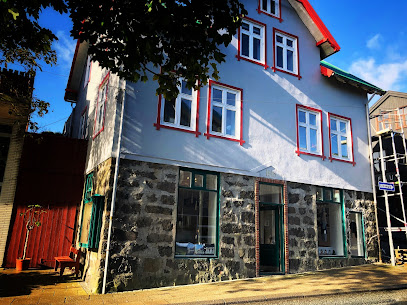
Fjord by Suffía Nón
Discover unique Faroese gifts and interior designs at Fjord by Suffía Nón, the perfect souvenir shop in Fuglafjørður.
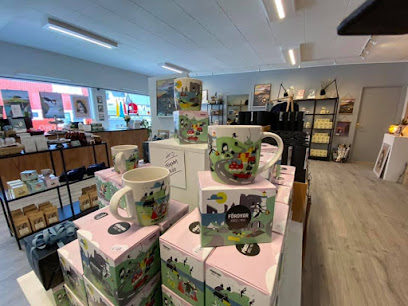
Kalasin Asia Shop (KAS)
Explore authentic Asian flavors at Kalasin Asia Shop, Tórshavn's premier destination for Asian groceries and culinary delights.
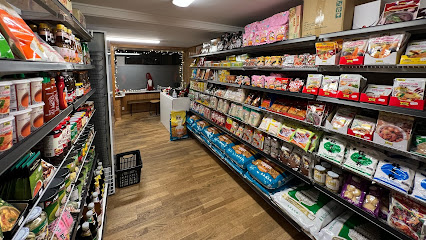
Rit & Rák
Explore Faroese literature and discover unique stories at Rit & Rák, Tórshavn's beloved bookstore and cultural hub.

Tógvhúsið
Discover the charm of Tógvhúsið, a yarn store in Tórshavn offering exquisite Faroese yarns and a welcoming community for knitters and crafters.

Glimmur
Discover the charm of Faroe Islands at Glimmur, your go-to gift shop in Tórshavn for unique souvenirs and local handicrafts.
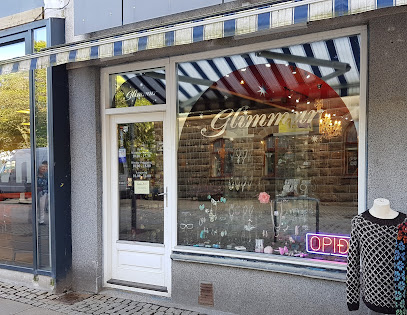
Essential bars & hidden hideouts
Irish Pub Torshavn
Experience the warmth of Irish hospitality at Irish Pub Torshavn, where good food, drinks, and live music create lasting memories.
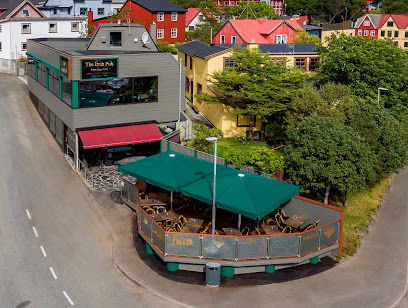
Sirkus Bar
Experience the vibrant nightlife of Tórshavn at Sirkus Bar, the go-to spot for locals and tourists seeking fun and great drinks in the Faroe Islands.

Rose's Restaurant & Catering
Experience the flavors of the Faroe Islands at Rose's Restaurant & Catering, where local ingredients meet culinary excellence.

Mikkeller Tórshavn
Discover the vibrant Mikkeller Tórshavn, a craft beer haven in the heart of the Faroe Islands, offering unique brews and a cozy atmosphere.
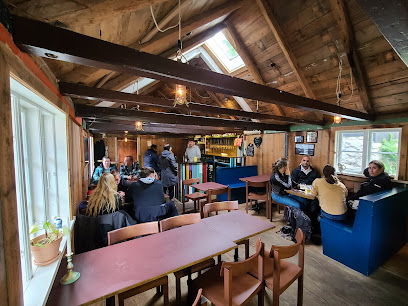
Café Zorva
Discover local flavors and breathtaking views at Café Zorva, a delightful brasserie in the heart of the Faroe Islands.
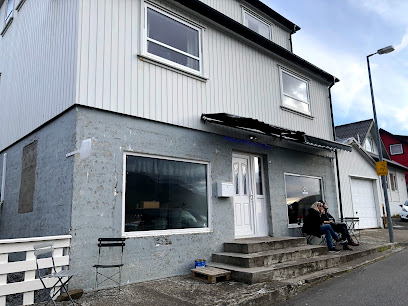
OY Brewing
Experience the rich flavors of Faroese craft beer and delicious bar food at OY Brewing in Tórshavn.
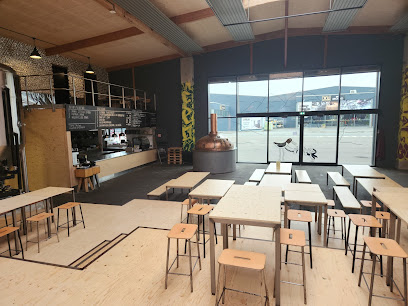
Roykstovan
Discover the warmth of Roykstovan, a cozy bar in Klaksvík offering local drinks and a delightful atmosphere for travelers in the Faroe Islands.
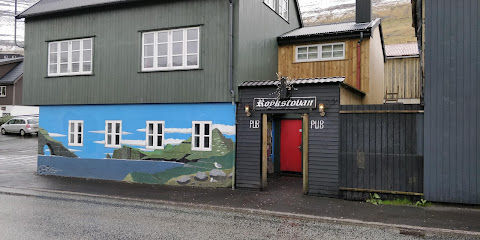
Glitnir
Discover the heart of Tórshavn's nightlife at Glitnir, a lively bar offering a unique taste of Faroese culture and an extensive drink selection.

Blábar
Experience the lively bar scene at Blábar, Tórshavn, where jazz and blues create an unforgettable atmosphere in the heart of the Faroe Islands.
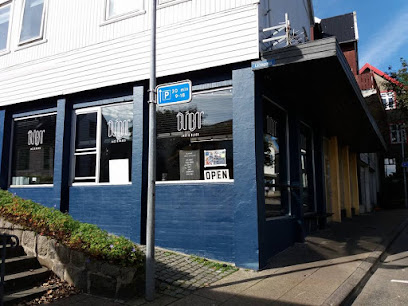
Tórshøll
Experience Tórshøll: A Vibrant Bar Offering Local Brews and Scenic Views in Tórshavn, Faroe Islands.
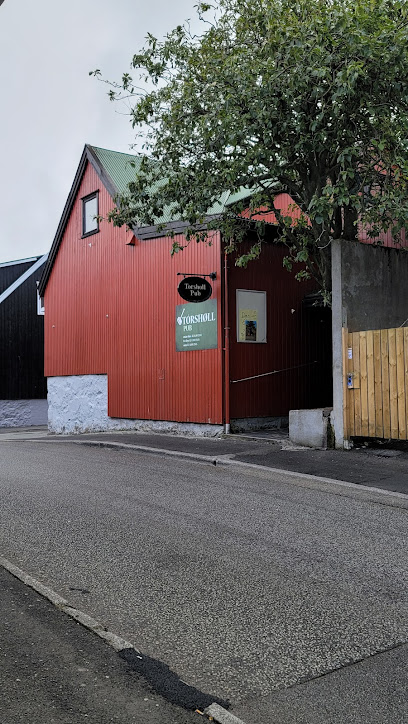
Maverick
Experience the vibrant nightlife of Klaksvík at Maverick, where local beers and a cozy atmosphere await.
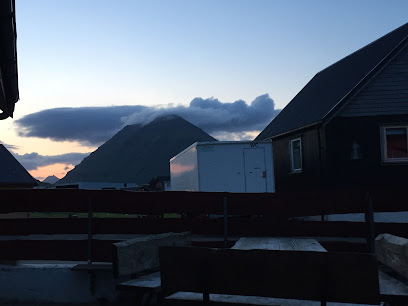
Landskrona Sports Bar
Experience the thrill of sports at Landskrona Sports Bar in Tórshavn, where excitement meets relaxation in a vibrant setting.
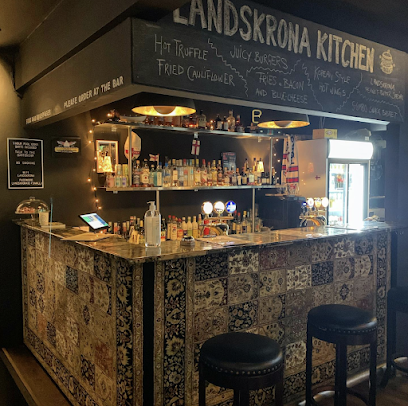
Ástaklokkan
Experience the charm of Ástaklokkan in Tórshavn, where delightful breakfasts, lunches, and fine wines come together in a cozy atmosphere.
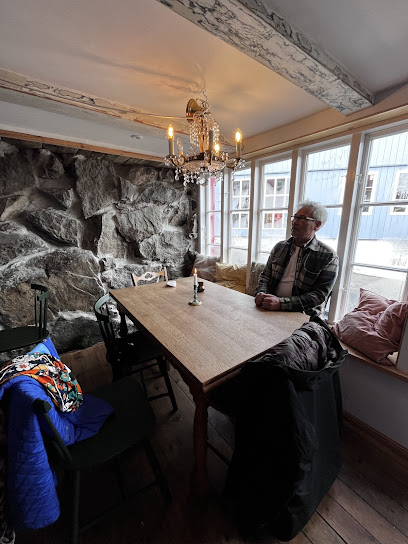
Bjórkovin, the Beer Hub
Experience the vibrant beer culture of Tórshavn at Bjórkovin, the ultimate bar for craft beer lovers in the Faroe Islands.
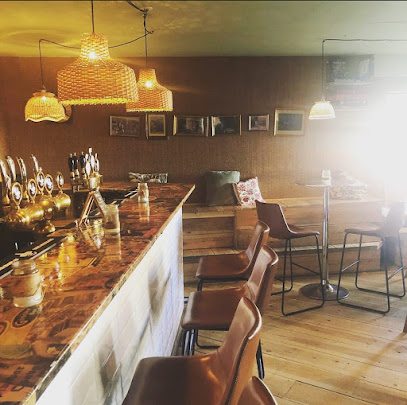
Faer Isles Distillery
Experience the essence of the Faroe Islands at Faer Isles Distillery, where aquavit is crafted with passion and tradition.
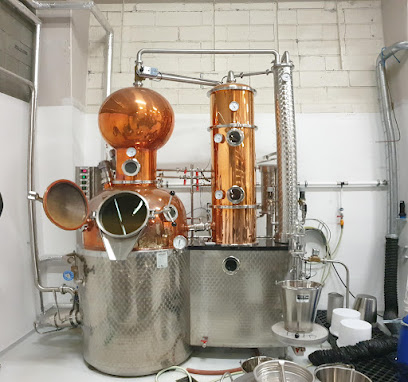
Local Phrases about Saksun
-
- HelloHallo
[ha-lo] - GoodbyeFarvæl
[far-væl] - YesJa
[ya] - NoNei
[nay] - Please/You're welcomeTakk fyri
[tahk fy-ree] - Thank youTakk
[tahk] - Excuse me/SorryFyri mær
[fy-ree mair] - How are you?Hvussu hevur tú tað?
[kvoos-soo hev-ur too tah] - Fine. And you?Godur. Og tú?
[go-dur. oh too] - Do you speak English?Talar tú enskt?
[tah-lar too enskt] - I don't understandEg skilji ikki
[ay shil-yi ih-kee]
- HelloHallo
-
- I'd like to see the menu, pleaseEg vil síggja menu, vænta
[ay vil see-ya meh-noo, vainta] - I don't eat meatEg eta ikki kjøt
[ay ay-ta ih-kee chut] - Cheers!Skaal!
[skawl] - I would like to pay, pleaseEg vil gjalda, vænta
[ay vil yal-da, vainta]
- I'd like to see the menu, pleaseEg vil síggja menu, vænta
-
- Help!Hjálp!
[hyowlp] - Go away!Far burtur!
[far burt-ur] - Call the Police!Ringið til Løgregluna!
[ring-eeth til lur-ay-gloo-na] - Call a doctor!Ringið til læknin!
[ring-eeth til layk-neen] - I'm lostEg er týður
[ay air toh-ee-ur] - I'm illEg er sjúkur
[ay air shoo-kuur]
- Help!Hjálp!
-
- I'd like to buy...Eg vil keypa...
[ay vil che-pa] - I'm just lookingEg kikja bert
[ay keek-ya bairt] - How much is it?Hvat kostar tað?
[kvut kost-ar tah] - That's too expensiveTað er ov dyrt
[tah air ohv deert] - Can you lower the price?Kann tú lætta prísin?
[kan too lye-ta prees-in]
- I'd like to buy...Eg vil keypa...
-
- What time is it?Hvat er klokkan?
[kvut air klohk-an] - It's one o'clockTað er eitt
[tah air ay-it] - Half past (10)Halv tíggju
[halv tee-yoo] - MorningMorgun
[mor-gun] - AfternoonEftirmissun
[eft-ir-mees-un] - EveningKvøld
[kvoold] - YesterdayÍ gjár
[ee g-yar] - TodayÍ dag
[ee dah] - TomorrowÁ morgun
[ah mor-gun] - 1Eitt
[ay-it] - 2Tvær
[tv-ayr] - 3Tríggir
[tree-gir] - 4Fýra
[foo-ir-a] - 5Fimm
[feem] - 6Seks
[seks] - 7Sjey
[sh-ay] - 8Átta
[ah-ta] - 9Ni
[nee] - 10Tíggju
[tee-yoo]
- What time is it?Hvat er klokkan?
-
- Where's a/the...?Hvar er ein...
[kv-ar air iyn] - What's the address?Hvat er adresan?
[kvut air ah-dress-an] - Can you show me (on the map)?Kann tú vísa mær (á kortinum)?
[kan too vee-sa mair (ow kort-in-um)] - When's the next (bus)?Nær kemur næsta (buss)?
[nair keh-mur n-ay-sta boos] - A ticket (to ....)Ein billett (til ....)
[iyn bee-let (teel)]
- Where's a/the...?Hvar er ein...
History of Saksun
-
Saksun, a picturesque village nestled in the northwest of the Faroe Islands, traces its origins back to the Viking Age. Archaeological findings suggest that the village was established in the 10th century. Early settlers were drawn to the area due to its fertile land and natural harbor, which provided a safe haven for boats. The unique landscape, characterized by steep mountains and a lagoon, offered both protection and sustenance to the inhabitants.
-
One of the most iconic historical landmarks in Saksun is its church, Dúvugarðar Church, built in 1858. This quaint, whitewashed church with its turf roof is situated on the site of an older stave church from the Middle Ages. The church is a testament to the village's enduring Christian heritage and serves as a focal point for local cultural and religious life. The interior features traditional Faroese wooden craftsmanship and offers stunning views of the surrounding landscape.
-
Historically, Saksun's lagoon was a natural harbor connected to the Atlantic Ocean, making it a bustling center for fishing and trade. However, in the 17th century, a violent storm deposited sand and gravel at the mouth of the lagoon, effectively transforming it into a tidal lagoon. This natural event significantly altered the village's economy and way of life, shifting the focus from maritime activities to agriculture and livestock farming.
-
Dúvugarðar Farmstead, a historic farm located in Saksun, offers a glimpse into traditional Faroese rural life. The farmstead dates back to the 17th century and has been meticulously preserved as a museum. Visitors can explore the old stone buildings with their characteristic turf roofs, and learn about the farming practices, tools, and daily routines of the Faroese people. The farmstead is an important cultural landmark that highlights the resilience and ingenuity of the Saksun community.
-
Saksun is steeped in Faroese folklore and legends, many of which have been passed down through generations. One notable tale is that of the 'Huldufólk' or hidden people, mythical beings believed to inhabit the hills and mountains around Saksun. These stories reflect the deep connection between the villagers and their natural surroundings, and continue to be an integral part of the cultural heritage of the Faroe Islands.
-
Today, Saksun is a serene and picturesque destination that attracts visitors from around the world. Despite its small population, the village has managed to preserve its historical charm and cultural traditions. Modern-day Saksun offers a blend of historical exploration and natural beauty, with its well-preserved buildings, scenic hiking trails, and the tranquil lagoon. The village stands as a testament to the enduring spirit and cultural richness of the Faroe Islands.
Saksun Essentials
-
Saksun is located on the island of Streymoy in the Faroe Islands. The nearest airport is Vágar Airport, approximately 60 kilometers away. From the airport, you can rent a car or take a taxi to Saksun. The drive takes about 1.5 hours and offers scenic views of the Faroese landscape. Alternatively, you can take a bus from Tórshavn, the capital, which connects to Saksun. The bus journey includes a transfer at Hósvík.
-
Saksun is a small village, and most of its attractions are within walking distance. Renting a car is the most convenient way to explore the area and nearby villages. Public buses are available but have limited schedules, so it's advisable to check the timetable in advance. Taxis can also be arranged, although they may be more expensive.
-
The official currency in the Faroe Islands is the Faroese króna (DKK), which is equivalent to the Danish krone. Credit and debit cards are widely accepted, but it's a good idea to carry some cash for smaller establishments and remote areas. ATMs are available in larger towns like Tórshavn, so it's recommended to withdraw cash before heading to Saksun.
-
Saksun is generally a very safe destination for tourists. Crime rates are extremely low, and it is rare for tourists to be targeted. However, it is always wise to take standard precautions, such as not leaving valuables unattended and staying aware of your surroundings. The natural environment poses more of a risk; be careful when hiking and pay attention to weather conditions.
-
In case of an emergency, dial 112 for immediate assistance. The nearest medical facilities are in Tórshavn, about an hour's drive from Saksun. It is advisable to have comprehensive travel insurance that covers medical emergencies. For minor health issues, carrying a basic first-aid kit can be helpful, as pharmacies may not be easily accessible in remote areas.
-
Fashion: Do wear layers, as the weather can change rapidly. Waterproof clothing is essential. Don't wear overly flashy or revealing outfits. Religion: Do respect local customs and traditions, especially if you visit the village church. Public Transport: Do check the bus schedule in advance. Don't expect frequent service. Greetings: Do greet locals with a smile or a simple 'Hallo' (Hello). Don't be overly familiar or intrusive. Eating & Drinking: Do try local Faroese dishes like fermented fish and lamb. Don't waste food, as it is considered disrespectful.
-
To experience Saksun like a local, visit during off-peak times to avoid crowds and enjoy the serene landscape. Engage with the locals, who are often willing to share stories about the village's history and culture. Don’t miss the tidal lagoon and the old farmhouse museum, which offer a glimpse into traditional Faroese life. For a unique experience, take a hike to the nearby Dúvugarðar farm.
Nearby Cities to Saksun
-
Things To Do in Hvalvík
-
Things To Do in Kvívík
-
Things To Do in Sorvagur
-
Things To Do in Sandavágur
-
Things To Do in Miðvágur
-
Things To Do in Gøta
-
Things To Do in Strendur
-
Things To Do in Runavík
-
Things To Do in Klaksvik
-
Things To Do in Tórshavn
-
Things To Do in Argir
-
Things To Do in Nólsoy
-
Things To Do in Tvøroyri
-
Things To Do in Vágur
-
Things To Do in Seydisfjordur


